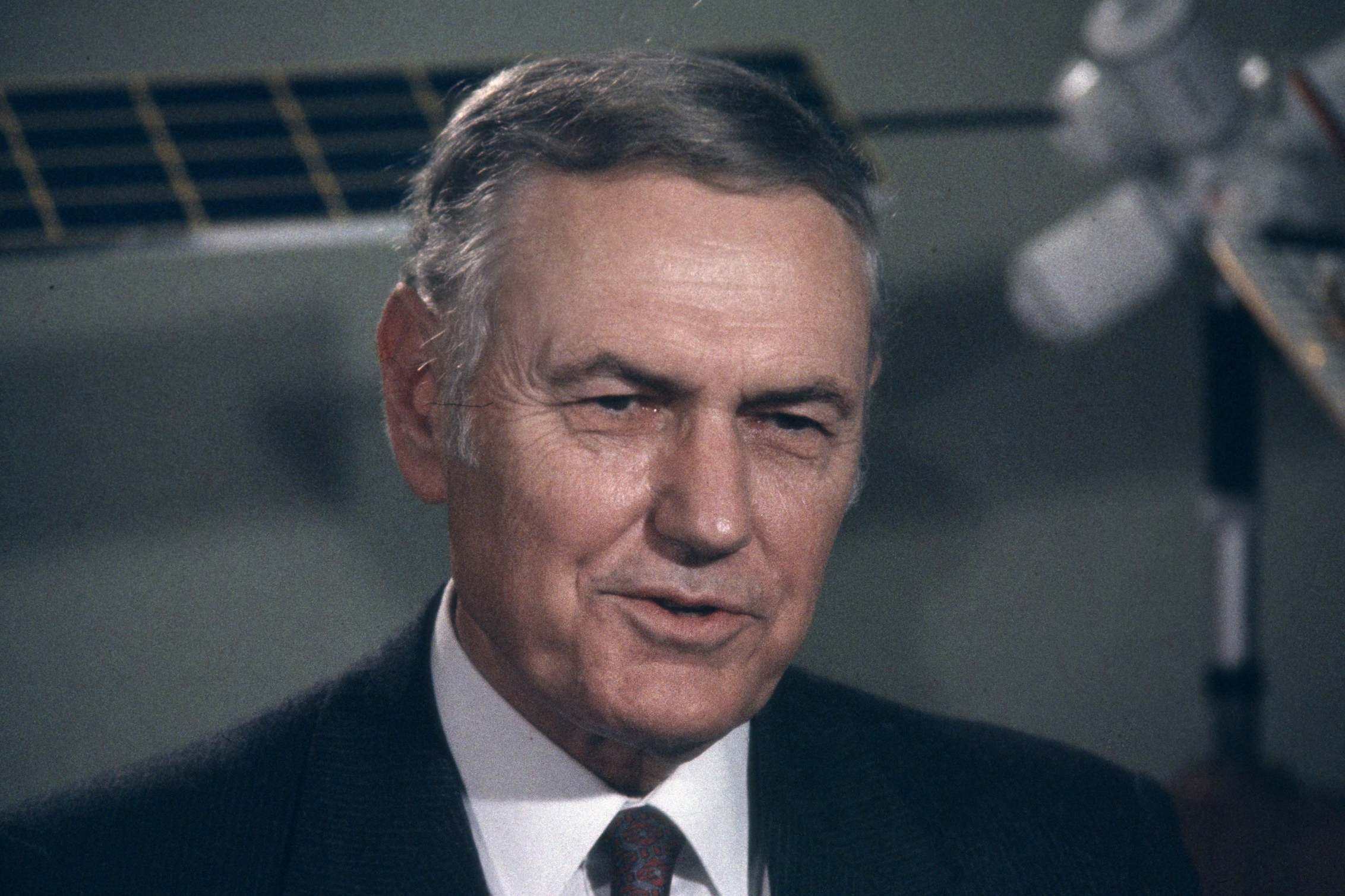James Beggs: Nasa chief who quit after the Challenger disaster
He tried to step up the US space programme during his five-year tenure but his achievements were ultimately overshadowed

Your support helps us to tell the story
From reproductive rights to climate change to Big Tech, The Independent is on the ground when the story is developing. Whether it's investigating the financials of Elon Musk's pro-Trump PAC or producing our latest documentary, 'The A Word', which shines a light on the American women fighting for reproductive rights, we know how important it is to parse out the facts from the messaging.
At such a critical moment in US history, we need reporters on the ground. Your donation allows us to keep sending journalists to speak to both sides of the story.
The Independent is trusted by Americans across the entire political spectrum. And unlike many other quality news outlets, we choose not to lock Americans out of our reporting and analysis with paywalls. We believe quality journalism should be available to everyone, paid for by those who can afford it.
Your support makes all the difference.James Beggs had a key role as Nasa’s administrator promoting America’s space shuttle programme – but resigned after the 1986 Challenger disaster that left seven astronauts dead.
Beggs, who has died aged 94, was a onetime navy officer who worked in the aerospace industry and held top jobs at Nasa in the 1960s and later in the US Department of Transportation. He was named Nasa administrator, the space agency’s top position, in 1981.
At that time, Nasa’s glory days of piloted space flight and heroic missions to the moon were a decade in the past, and budget cuts had reduced the agency’s scope and morale. Beggs sought to restore Nasa’s lustre through scientific expeditions, strengthened ties to the military and a new space station – which White House budget-cutters dismissed as a “motel in the sky for astronauts”.
Beggs secured additional funding for Nasa and proved to be a popular and charismatic figure, given to spontaneously quoting lines from Shakespeare. He was skilled at dealing with lawmakers on Capitol Hill and helped to rebuild the country’s space programme. He foresaw a time when a squadron of space shuttles would be conducting scientific research and launching secret military satellites in space.
He stepped up the space shuttle programme, with more than 20 successful missions during his tenure, and was instrumental in establishing programmes to send members of Congress and teachers into space. By 1985, Nasa had 20,000 employees and an annual budget of almost $8bn. It was a constant battle, Beggs said, to win support from President Ronald Reagan, who had little interest in the space programme.
Beggs’s tenure at Nasa was overshadowed by two events that took place in rapid succession. In December 1985, he was indicted by federal prosecutors in Los Angeles for defrauding the army of millions of dollars when he had worked at General Dynamics, a major defence contractor. He and three other company executives were charged with illegally billing the government for millions of dollars in cost overruns during the development of a prototype of an anti-aircraft gun.
Beggs took a leave of absence from Nasa while denying the accusations. The agency’s top officials signed letters sent to Congress and the White House calling Beggs “an individual with the highest standards of integrity”.
He was still officially the Nasa administrator a month later on 28 January 1986, when the Challenger space shuttle broke apart 73 seconds after lift-off. All seven members of the flight crew, including New Hampshire schoolteacher Christa McAuliffe, were killed.
Soon afterwards, as congressional committees and oversight panels began to search for answers, Beggs resigned. With his career in tatters, he fought a legal battle with federal prosecutors for more than a year.
In June 1987, all charges against Beggs and the three other General Dynamics executives were dropped. A Department of Justice review found that no laws had been violated, and attorney general Edwin Meese took the unusual step of sending a letter to Beggs, apologising for the prosecution. Two years later, a federal judge ordered more than a dozen government agencies to destroy all records related to Beggs’ indictment, giving him a full exoneration.
James Montgomery Beggs was born in 1926 in Pittsburgh, Pennsylvania, and grew up in San Antonio, Texas. His father was in the insurance business, his mother a homemaker.
After a year at Southern Methodist University in Dallas, Beggs entered the US Naval Academy in Annapolis, graduating in 1947. He served in the navy until 1954. A year later, he received an MBA from Harvard University.
He worked for Westinghouse in Baltimore until 1968, when he became Nasa’s chief of research in Washington. He was a top official at the Department of Transportation from 1969 to 1973, then joined a company owned by reclusive mogul Howard Hughes. In 1974, Beggs became an executive vice president of General Dynamics in southern California, managing defence and aerospace projects.
After his legal problems were resolved, he worked for various aeronautical companies, severed on corporate boards and worked as a consultant well into his eighties.
His wife Mary Harrison Beggs died in 2015. He is survived by four children (another daughter predeceased him).
James Beggs, Nasa administrator, born 9 January 1926, died 23 April 2020
© Washington Post
Join our commenting forum
Join thought-provoking conversations, follow other Independent readers and see their replies
Comments